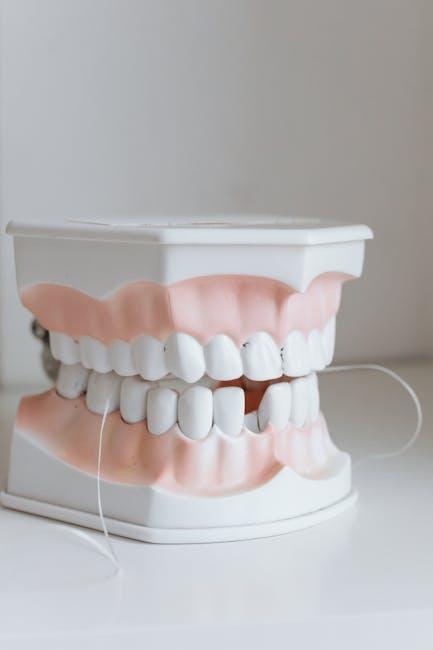Fluoride Ban Could Create Cavities For 1 Of Every 3 U.S. Kids
Source: U.S. News & World Report
Introduction
Fluoride has long been celebrated as a key weapon in the fight against dental cavities, especially among children. However, recent discussions and legislative efforts toward banning fluoride in community water systems threaten to reverse decades of oral health progress in the United States. According to health experts, such a ban could potentially lead to cavities in one out of every three U.S. children, a dramatic increase that necessitates public awareness and informed decision-making.
Why Fluoride Matters for Kids’ Dental Health
Fluoride is a naturally occurring mineral that helps to strengthen tooth enamel and prevent decay. It is commonly added to public drinking water and dental products like toothpaste and mouth rinses to reduce the risk of cavities. For children, whose teeth and oral health are still developing, fluoride plays an essential role in protecting against early childhood caries—a leading chronic disease among young children.
Key Benefits of Fluoride
- Strengthens enamel: Fluoride helps rebuild weakened tooth enamel before cavities form.
- Prevents decay: It inhibits harmful bacteria’s ability to produce acids that cause cavities.
- Cost-effective prevention: Water fluoridation saves families and healthcare systems money by reducing dental treatment needs.
- Safe and effective: Supported by numerous health organizations including the CDC, ADA, and WHO.
The Impact of a Fluoride Ban on U.S. Children
Removing fluoride from public water and dental products could drastically reduce these benefits, according to pediatric dentistry experts and epidemiologists. The following points summarize the potential repercussions of a fluoride ban:
- Increased cavity rates: Studies estimate that cavities would rise by about 33% among children.
- Higher dental costs: More cavities mean more fillings, extractions, and treatments, burdening families financially.
- Worsening oral health disparities: Communities with less access to dental care would be disproportionately affected.
- Negative educational outcomes: Poor dental health is linked to missed school days and reduced academic performance.
Table: Fluoride vs. No Fluoride Community Outcomes
| Health Aspect | With Fluoride | Without Fluoride |
|---|---|---|
| Cavity Prevalence in Kids | ~25% | ~33% (increase) |
| Average Dental Visits per Year | 1.2 | 1.8 |
| Dental Emergency Visits | Lower | Significantly Higher |
| Community Dental Treatment Costs | Reduced by 30% | Substantially Higher |
Practical Tips for Parents to Protect Kids’ Teeth Without Fluoride
If fluoride access is restricted, parents and guardians will need to compensate with enhanced oral hygiene and dietary habits. Here are some effective strategies:
- Brush teeth twice daily: Use fluoride toothpaste if available; otherwise, thorough brushing is essential.
- Limit sugary snacks and drinks: Reduce intake of sweets, sodas, and fruit juices, which cause enamel erosion.
- Encourage regular dental visits: Routine cleanings and exams help identify cavities early.
- Promote balanced diets rich in calcium and phosphorus: Foods like milk, cheese, nuts, and leafy greens support strong teeth.
- Consider alternative remineralizing products: Xylitol gum and non-fluoride sealants may offer some protection.
Case Study: Cities with and without Water Fluoridation
Research comparing cities that maintain water fluoridation versus those that have removed it provides real-world insight into the effects of fluoride on dental health:
| City | Water Fluoridation Status | Child Cavity Rate | Community Response |
|---|---|---|---|
| Grand Rapids, MI | Fluoridated | Lower (22%) | Ongoing education, reduced dental visits |
| Portland, OR | Non-fluoridated | Higher (35%) | Increase in dental treatments and emergency visits |
Firsthand Experience: A Parent’s Perspective
Sarah, a mother of two from a city considering a fluoride ban, shares her concerns:
“Ever since hearing about the possible fluoride ban, I’ve been worried about my kids’ dental health. We rely on fluoride toothpaste and community water fluoridation to keep cavities at bay. I’m doubling down on healthy eating and brushing, but I hope policy makers think twice before removing such a vital resource for our children’s well-being.”
Conclusion
The potential fluoride ban poses a significant public health risk, especially for the oral health of one-third of American children who could develop cavities if fluoridation stops. While fluoride remains one of the most cost-effective and scientifically supported methods to prevent tooth decay, parents, communities, and policy makers must work together to safeguard this essential resource. Proactive dental care habits and education become even more critical if fluoride is removed. Staying informed and advocating for children’s health today can prevent a future filled with preventable dental disease.


